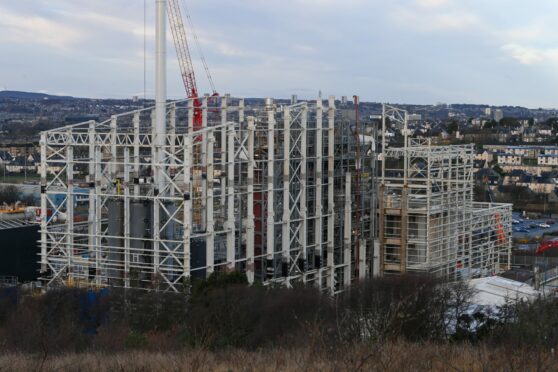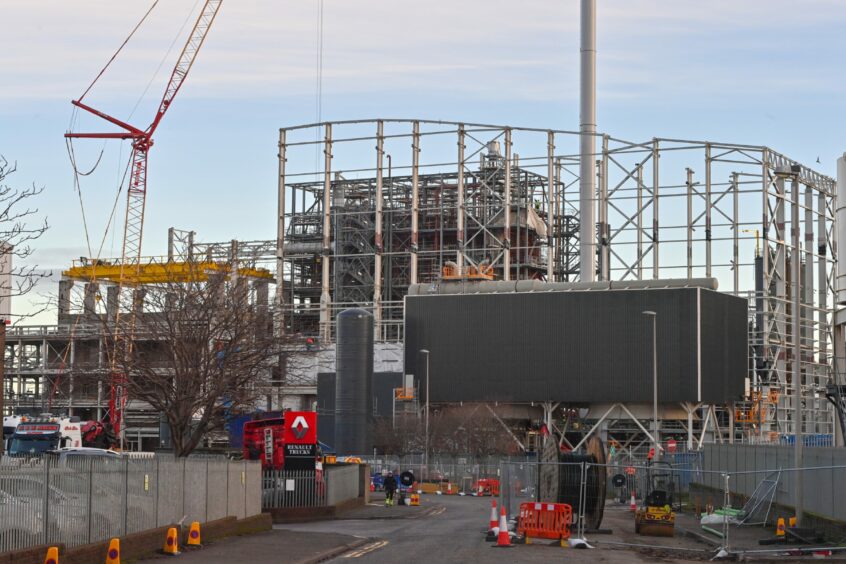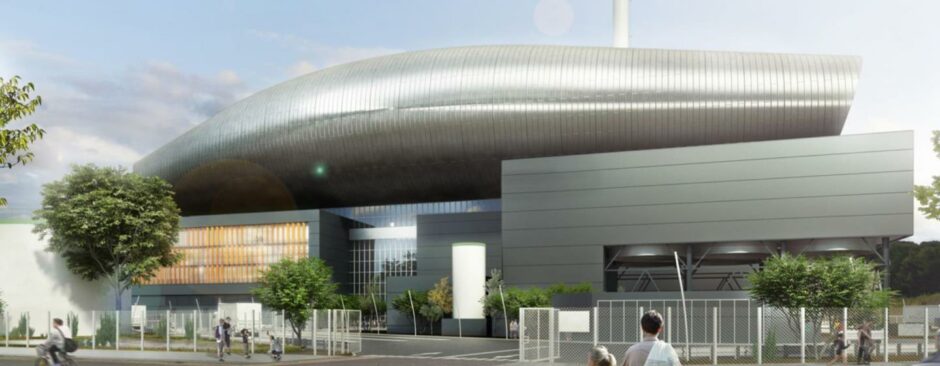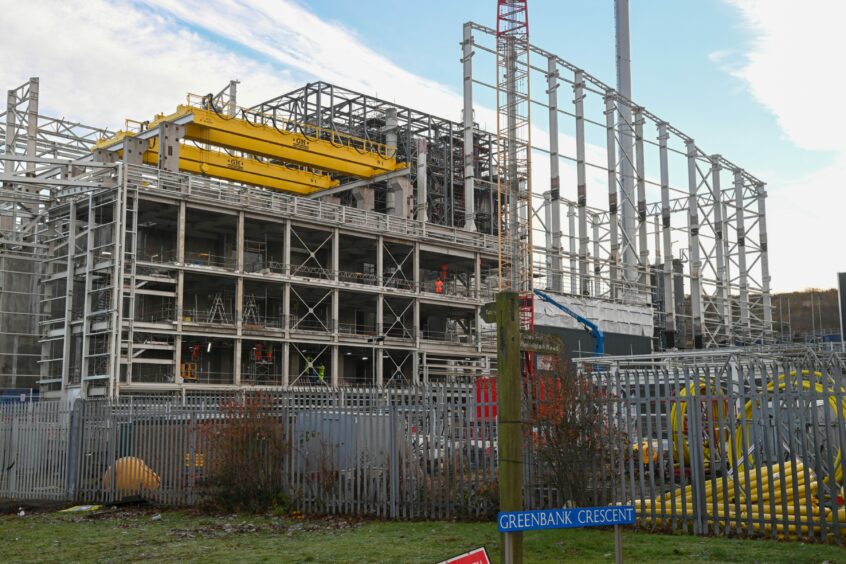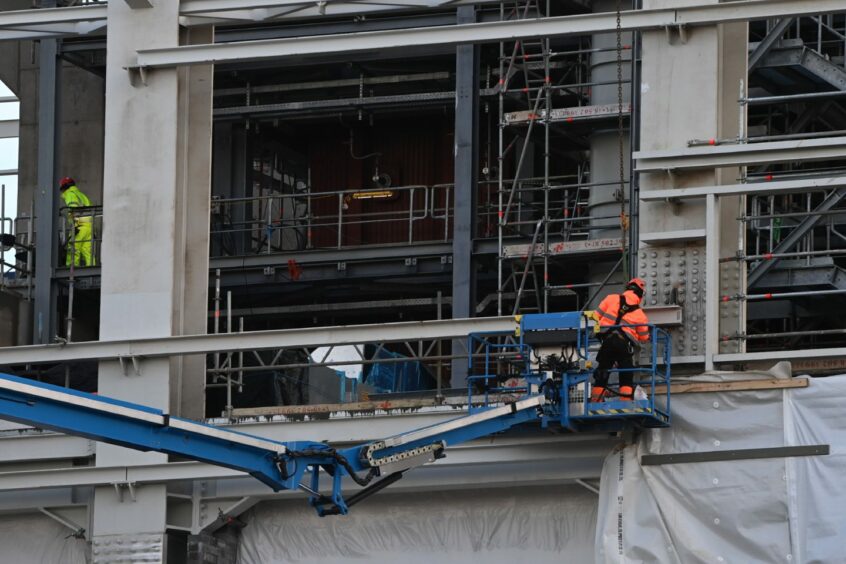Aberdeen’s under-construction energy from waste incinerator plant in East Tullos is “on the correct track” to start burning non-recyclable waste from next year.
Designed to help north-east local authorities drastically reduce the volume of their waste going to landfill in the face of strict legislature, the Ness Energy Project facility will take rubbish that can’t be recycled from all across Aberdeen, Aberdeenshire and Moray.
The £150 million plant will burn up to 150,000 tonnes of unrecyclable material every year, and produce heat and electricity.
Currently, Aberdeen City Council does not send any non-recyclable waste to landfill.
Instead, it is shipped to energy from waste plants in northern Europe.
Tory councillor Philip Bell, convener of the city council’s operational delivery committee, said that once the Ness site is up and running the waste will be dealt with here in the north-east, and provide energy locally.
What’s the timescale for the incinerator to get up and running?
Aberdeen City Council first made the business case for the incinerator in 2013, and since then it has faced numerous delays.
However, construction is now well underway at the site in East Tullos, and the site will soon more closely resemble artist’s impressions of what it will look like once completed.
Mr Bell explained that commissioning of the plant is anticipated to start in spring 2022, and it could be fully operational by the end of 2022, or start of 2023.
He said: “There have been delays with supply issues and with Covid, but the project was re-baselined about a year ago, and is on the correct track for that schedule.
“They’ll start commissioning late Spring next year, they’ll then be doing what’s called hot commissioning, which is actually firing it up, and that will probably be in quarter three of next year, and the commissioning might well go on until early 2023.
“But what they do with hot commissioning is they actually accept waste, so they’ll be burning waste and then ramping up the amount of waste that they’ll be burning.”
Could Aberdeen’s incinerator be leading the way for other regions?
Mr Bell said “there’s a lot of birds being hit with one stone” with the Ness project, as it will cut the city council’s costs of sending non-recyclable waste abroad, and also generate heat for local heat networks.
He argued that other local authority’s may in the future look to the Ness project as a model to follow for their own waste requirements.
Moray, Aberdeenshire and Aberdeen City Council paid £10.52 million in landfill tax for waste sent to landfill in 2019 alone.
Mr Bell continued: “Many other councils have woken up to the fact they’ll have to do similar.
“When you look around, there will be huge pressure on these northern Europe plants, and they’ll charge with that they feel they can get away with.
“This plant will keep a lid on our costs, and it’s for three local authorities as well that will share the burden of the capital costs, so it’s win-win really.”
He added: “We’re wanting to reduce the amount of gas we burn, the amount of oil we burn for domestic heating, and Scotland has a significant number of people that are in significant fuel poverty, which is defined by 20% of their wages going on heating.
“And this helps with that, it’s burning waste in a very clean way, and we get electricity and heat that can go into heat networks from it.”
What about pollution from the plant?
Those behind the project have gone to great lengths to reduce the use of the word “incinerator” to describe the Ness scheme, even going so far as to answer the question of “Why don’t you call it an incinerator?” in an FAQ on the official website.
They argue that “technology has moved on significantly from an old style, pre-1990s incinerator”, which were designed to “dispose of unwanted material by burning them”.
The new type of plants, such as the one being built in East Tullos for the Ness project, are designed to process non-recyclable waste as efficiently as possible.
Solid remains left behind from the combustion process at Ness, named incinerator bottom ash, will be further processed at a new facility near Portlethen.
The ash will be turned into useful products for the construction industry, for example as a replacement for sand in cement production.
Emissions from the East Tullos facility will be monitored by the Scottish Environment Protection Agency (Sepa), and flue gases from the combustion process will be “cleaned” of particulates before being released into the atmosphere.
Fears have still been raised about the impact of the facility on the local communities surrounding where it is being built in East Tullos.
Mr Bell however does not believe there should be any cause for concern.
He said: “If people are worried about exhaust gasses, they really ought not to be, because they’re monitored very carefully and there’s all sorts of emissions clean-up to ensure what goes out of the back is very, very low level.”
